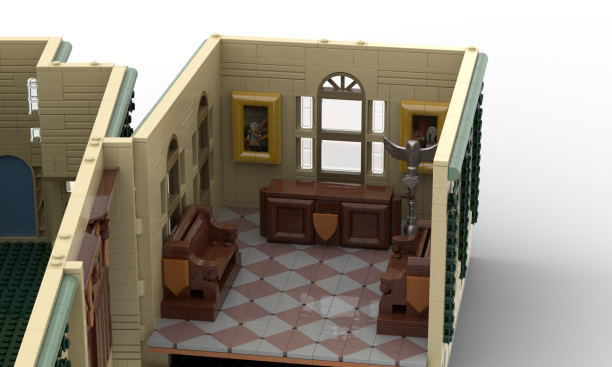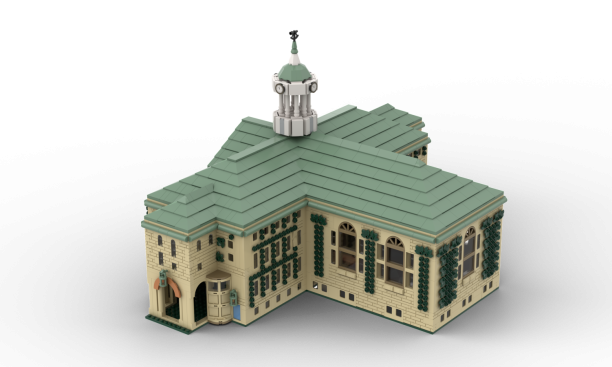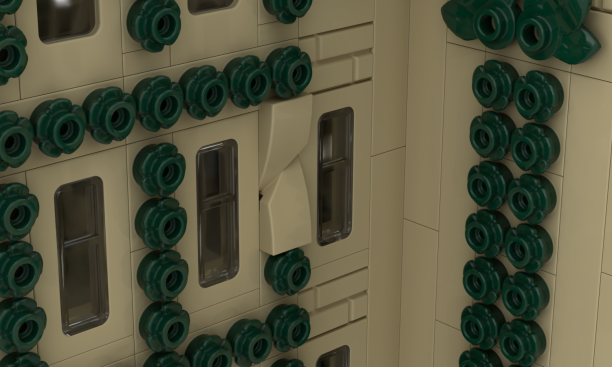
Nassau Hall was built over the course of two years in the 1750s, using sandstone from a nearby quarry. Matt Smith’s homage to the iconic building came together on a much faster timetable, thanks to design software and 2,998 virtual Lego bricks.
Smith, a communications specialist in Princeton’s Housing and Real Estate Services who rekindled his love of Lego during the pandemic, devoted about 50 to 60 hours of his time away from the office to creating his meticulous model of Old Nassau using BrickLink Studio, a digital building program for Lego enthusiasts. He hasn’t made a physical prototype, but photorealistic renderings of his work were published in May on the Lego Ideas website. Voting will go on for at least the next year. If enough supporters like the project, it could eventually become an official Lego set.Smith used reference photos and visits to Nassau Hall to capture as many details as possible, from the ivy-covered walls and “cannonball dent” on the south face to the eight-sided cupola and bronze weathervane on the roof. Among the biggest challenges, he says, was keeping his design under the 3,000-piece limit for projects posted on Lego Ideas. He eliminated a few columns of windows, partly to save pieces but also to make the building’s width look more realistic.
Under the roof, which is designed to easily lift off, Smith recreated Nassau Hall’s faculty room, complete with wooden benches; its distinctive diagonal checkerboard floor; “Lego-esque” paintings of the two Georges, George Washington and King George II; and the ceremonial mace carried in Princeton’s Commencement procession. “The eagle on top of the mace I’m particularly proud of,” Smith says. “It really resembles the genuine article.”

The palette of available Lego pieces meant choosing kneeling cats to stand in for the tiger statues that flank the front steps, and smaller features like class ivy plaques could not be easily recreated. But overall, Smith says, he was happy with the level of detail in his design.
Lego Ideas (and its predecessor, Lego Cuusooo) launched more than a decade ago, and several user-generated sets have made their way from the website to store shelves, including Jerry’s apartment from the TV show Seinfeld and a miniature Fender Stratocaster guitar. To be considered for production, a project needs to receive support from 10,000 users.
In 2023, Smith created a 1,968-piece set based on Mister Rogers’ Neighborhood — featuring Rogers’ house on one side and the Neighborhood of Make-Believe on the other. It was hit online, reaching the 10,000-supporter threshold in just 38 days, thanks in large part to Rogers devotees in his hometown of Pittsburgh, Smith says. But Lego ultimately chose not to make the set. “Obviously, I’m disappointed,” Smith told KDKA News in Pittsburgh when the decision was announced. “As Mister Rogers would say, it’s OK to feel that way, right?”
Smith says he is not aware of any collegiate buildings among Lego’s sets inspired by historic architecture. He received approval from Princeton’s Trademark Licensing office before posting his design, and the online description includes a disclaimer noting that it was created by an individual, not the University.
When a set does get made, the designer typically receives 1% of royalties and 10 copies of the set, says Smith, who adds that for him, it is certainly a labor of love and “not a money-making venture.”



